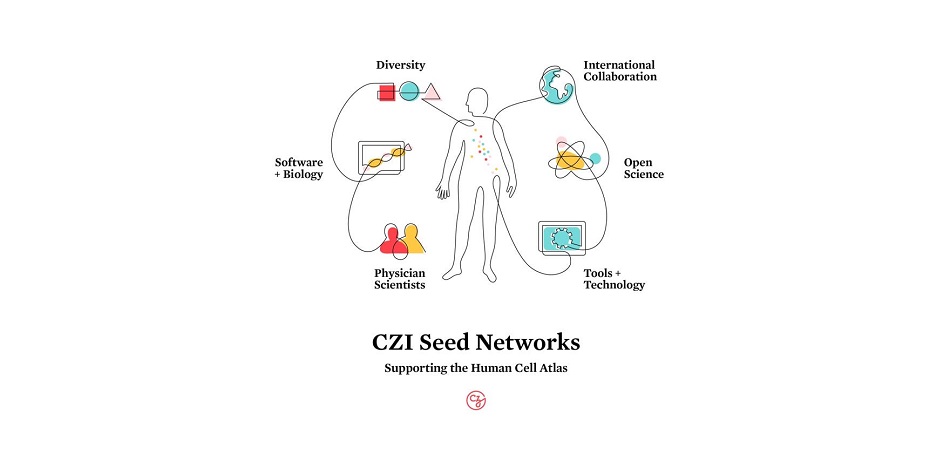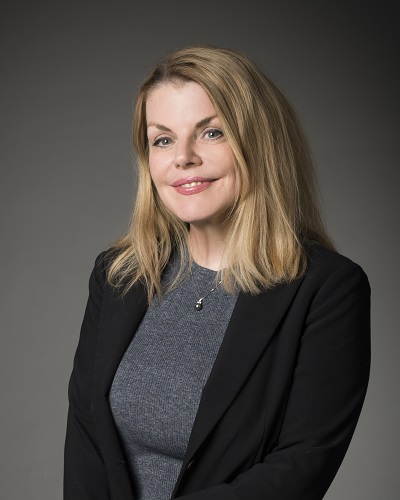
Two John A. Moran Eye Center researchers recently won grants by the Chan Zuckerberg Initiative (CZI) to work on the Human Cell Atlas, an international collaboration to map all cells in the human body for better understanding of health and disease.
Margaret DeAngelis, PhD, will be part of the Cell Atlas of the Neural Retina team. Gregory S. Hageman, PhD, will be working on the Cell Atlas of the Human Eye from Birth to Old Age team.
International Collaboration
The two are among scientists, computational biologists, software engineers, and physicians from 200 labs around the world named to 38 collaborative science teams to support the development of the Human Cell Atlas. CZI recently announced $68 million in funding for the three-year team projects.
"We’re excited to further support and build interdisciplinary collaborations that will accelerate progress toward a first draft of the Human Cell Atlas," said Cori Bargmann, CZI’s head of science.

Understanding the Basic Biology of the Retina
The team including DeAngelis will work to establish a cell reference atlas of the human neural retina, build a high-resolution 3D map for all the cell types in the retina, and develop analysis software tools.
While the retina is only about 0.5 mm thick, it has several layers, including the neural layer that is made up of photoreceptors and nerve cells that convert light into electrical impulses. The optic nerve sends these impulses to the brain, which produces an image.
DeAngelis, the principal investigator of the Ocular Genomics Laboratory at the Moran Eye Center, specializes in systems-based biological approaches to pinpoint causes of eye conditions including age-related macular degeneration (AMD). She will serve as co-principal investigator on the CZI team with the following researchers:
- Rui Chen, PhD, Baylor College of Medicine
- Kirsten Frieda, PhD, Spatial Genomics
- Michael Mancini, PhD, Baylor College of Medicine
- Wenyi Wang, PhD, University of Texas MD Anderson Cancer Center
To help build the neural retina atlas, the team will use normal aged eye tissue from a donor repository DeAngelis and Moran colleagues have been developing since 2013. The tissue is subject to an extensive protocol, published by the team earlier this year in Investigative Ophthalmology & Visual Science, which includes DNA phenotyping as well as blood, plasma, and other samples for all donors.
Such extensive information is critical because the basic biology of the retina is not well understood, DeAngelis said.
"By furthering our understanding of basic biology of the normal neural retina, we can better ascertain disease states, where things go wrong," DeAngelis said. "Think about it as teasing out a needle in a haystack. By having an atlas, we could really pinpoint where diseases are starting."

Vision of a Lifetime
The team including Hageman will use single cell and single nucleus RNA-sequencing, computational inference, and histological (microscopic anatomy) analysis to generate a reference atlas of cell types in the human eye, using data across a person’s natural lifespan.
Hageman, executive director of Moran’s Sharon Eccles Steele Center for Translational Medicine (SCTM), will serve as co-principal investigator with the following researchers:
- Tommaso Biancalani, PhD, Broad Institute of MIT and Harvard
- Dejan Juric, MD, Massachusetts General Hospital, Harvard Medical Center
- Joshua Sanes, PhD, Harvard University
- Ayellet Segre, PhD, Harvard Medical School, Massachusetts Eye and Ear
- Tavé van Zyl, MD, Harvard Medical School, Massachusetts Eye and Ear
Key to the team’s work is the human eye tissue repository Hageman began developing in the 1980s. The repository has played an important role in the SCTM’s development of a treatment for a prevalent form of AMD. The treatment, heading to clinical trials, is based on years of genetic research that demonstrates AMD is at least two biologically distinct diseases.
"Over $30 million has been invested over the past 25 years to develop a tissue repository comprised of more than 8,500 pairs of human eyes, all categorized genetically, clinically, and ophthalmologically," Hageman said. "The project, especially the single nucleus RNA-sequencing, will rely heavily on this unique resource."
Broad Goals
CZI says it will make the data, protocols, and computational tools developed by the teams freely available to the research community.
The initiative previously announced funding for 85 one-year projects to create collaborative computational tools to build the Human Cell Atlas, as well as 38 pilot projects to help establish best practices and technologies.
Priscilla Chan, MD, and Mark Zuckerberg, co-founder and CEO of Facebook, established CZI in 2015 with the goal of leveraging technology to help solve some of the world’s toughest challenges — from eradicating disease to improving education to reforming the criminal justice system.